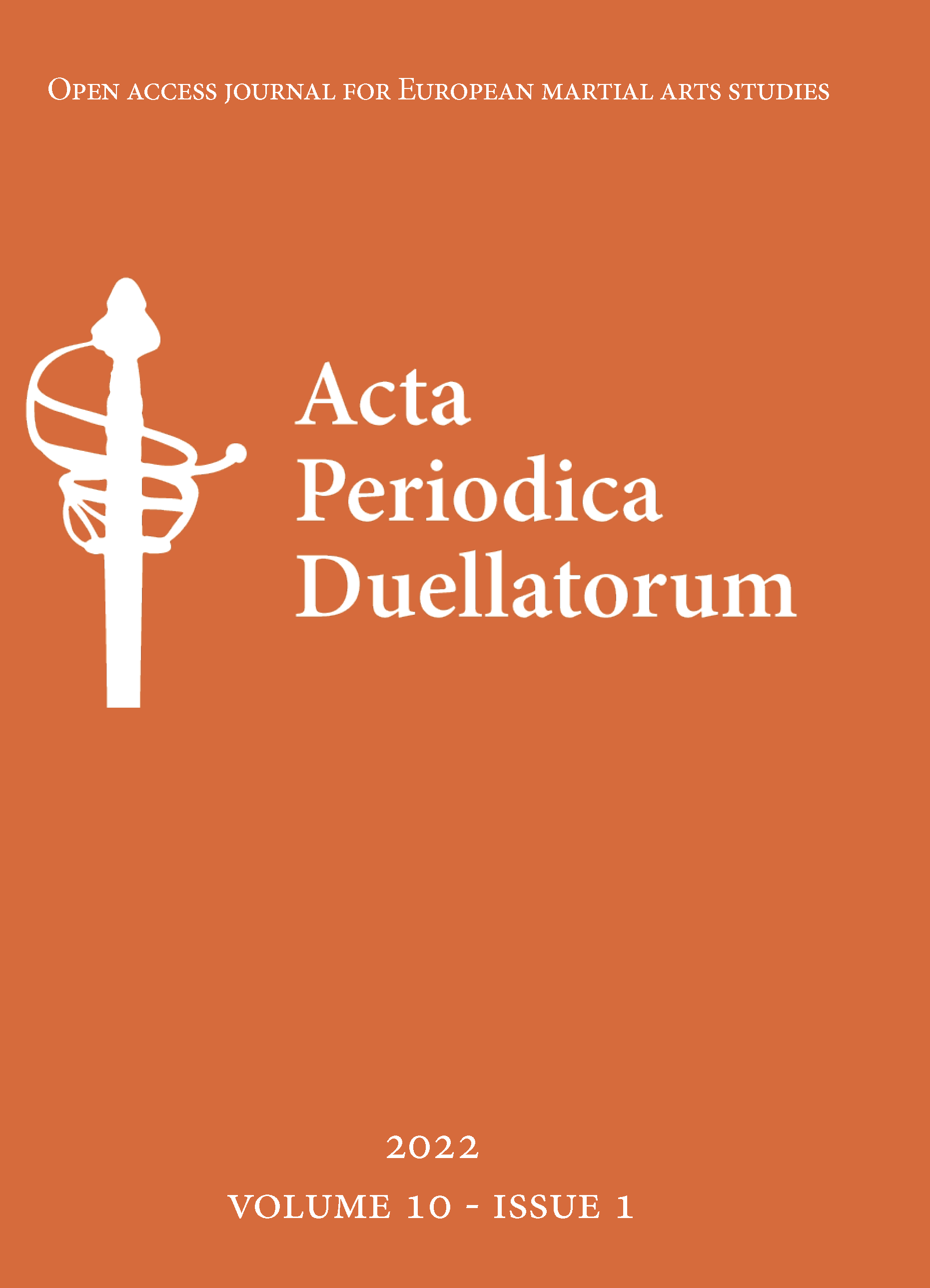The state of HEMA in 2021: The German & Austrian HEMA census
DOI:
https://doi.org/10.36950/apd-2022-007Keywords:
HEMA census, HEMA zensus, sports statistics, Historical European Martial Arts (HEMA)Abstract
To understand the Historical European Martial Arts (HEMA) community, its weapon disciplines, organisational structure and gender, a HEMA census was conducted in 2021 for Germany and Austria and in 2019 for Germany. The 2021 census captures 3186 HEMA practitioners training in 124 locations in Germany and 801 practitioners training in 34 locations in Austria. It is the most comprehensive and detailed dataset of its kind to date. It shows that most HEMA groups are organised as an independent Verein or as part of an umbrella Verein.1 The pandemic had an average effect on the number of practitioners and primarily impacted commercial schools with a 20% reduction in membership. 20% (Germany) and 27.5% (Austria) of all practitioners are identified as female, while 0.75% (Germany) and 3.9% (Austria) of practitioners are identified as nonbinary. Longsword is the most popular weapon discipline, being trained at over 88% of locations in both countries. Runner-up disciplines trained at 40% to 44% of locations include Long Knife, Dagger, Sword & Buckler, Historical Wrestling (Germany), and Dagger, Sword & Buckler and Polearms (Austria). Two-handed swords saw the biggest increase in training locations during the pandemic. HEMA hotspots are in South Germany (Bavaria and Baden-Württemberg), where nearly 39% of all German practitioners train, and in Eastern Austria (Vienna, Lower Austria and Burgenland), where over 55% of all Austrian practitioners train.
Downloads
Downloads
Published
Issue
Section
License
Copyright (c) 2022 Alexander Fürgut

This work is licensed under a Creative Commons Attribution-NonCommercial-NoDerivatives 4.0 International License.



